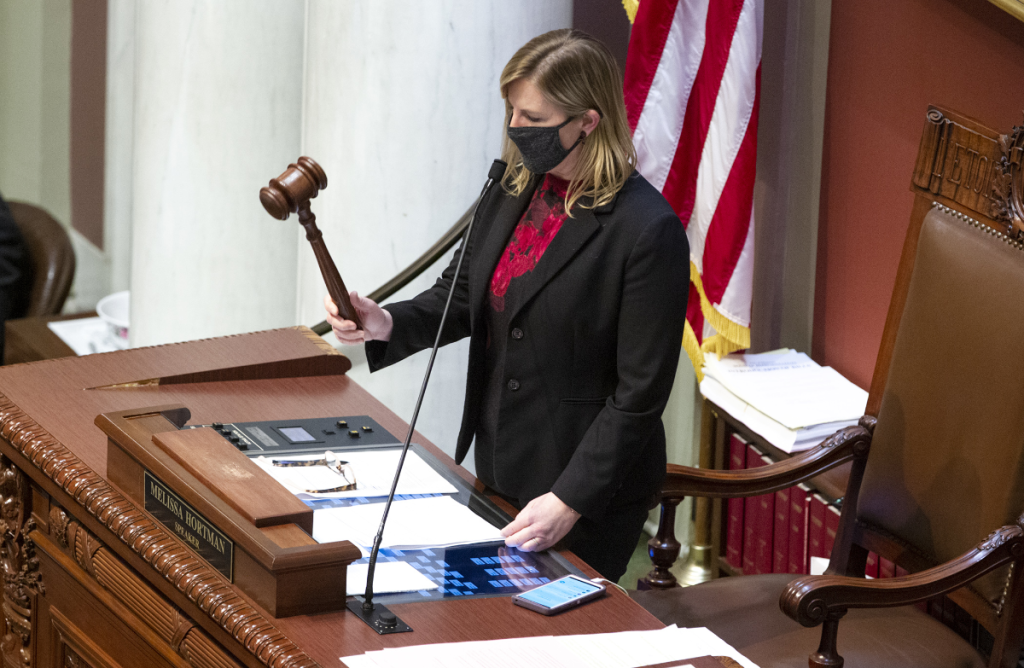Copyright Minnesota House of Representatives. Photo by Paul Battaglia.
Minnesota’s 91st regular legislative session drew to a close on May 18. And there was nothing regular about it. When session started, the hottest news was the growing state surplus. COVID-19 hit, forcing lawmakers to shift their focus to a much needed public health response and now-projected $2.4 billion budget shortfall—all while learning how to work together in virtual spaces amidst a global pandemic.
Hopes for getting any other bills to the floor during regular session, like an education omnibus policy bill, faded amid growing demands to pass COVID-19 legislation by session’s end. And even that came down to the wire, as the DFL-controlled House and Republican-controlled Senate engaged in intense around-the-clock negotiations. Fortunately, legislators successfully rallied to pass a cumulative $550 million for COVID-19 relief, which included a COVID-19 education bill (HF4415).
The bill:
- Allows budget flexibility within schools and districts (on specific budget line items) to support adequate access to technology and other distance learning resources, including student nutrition needs.
- Directs the commissioner of education to collaborate with the commissioner of labor and industry to incorporate construction and skilled trades into career counseling services for middle and high school aged students.
- Waives testing and truancy requirements.
- Directs the commissioner of education to work in collaboration with Governor Walz to equitably distribute emergency federal funds (CARES Act).
- Extends timeline for teacher licensure renewals by six months as well as honoring student teaching hours.
Not Included: Honoring compensation of hourly workers for suspected illness due to COVID-19, reduced hours, or inability to work due to school closures.
The state bonding bill and the education omnibus policy bill (HF4542) also failed to make it across the finish line. All was not lost. Governor Walz was able to sign a number of bills into law, like the bipartisan insulin affordability bill and the raising of the age to buy tobacco from 18 to 21.
Special session kicks off with big changes & second chances
With an historic session adjourned, state leaders thought they could take a beat to reflect, reevaluate, and strategize for the future. Then, in true 2020 form, Minnesota marched further into unprecedented territory with the police murder of George Floyd and subsequent uprisings that garnered international attention.
On Friday June 12, Governor Walz convened a special legislative session. It is expected that the House and Senate will resume work on the bonding bill, as well as provide oversight of the new federal CARES Act and state employee contracts. In addition, Governor Walz added police reform through accountability and transparency and strengthening the state’s economy to the growing list of priorities to tackle during special session.
Special session will allow legislators one last chance to get bills—otherwise dead in the water—reintroduced, passed, and signed into law before session ends. On Tuesday June 16, the House Education Policy committee hearing met to vote on modifications to general education bills (HF33/HF36), which span across issues like teacher licensing, health and safety, special education, and early childhood education.
This will be a special session to remember. It’s an election year, and a number of session priorities address long-standing systemic racial inequities and injustices. Legislators seeking reelection will be pushed to take more definitive stances on these serious topics.
For any business left unattended after a tumultuous year, lawmakers—all of whom are up for reelection this fall—will have to look to 2021 to pick up where key issues left off.
We will continue to follow and report on what happens at the legislature. Stay tuned or sign up to receive email updates.
Education policy outside the legislature
Work to revise the Standards of Effective Practice for Teachers (SEP) continues. Throughout the process, more questions have emerged. Recently, the Professional Educator Licensing and Standards Board (PELSB) invited public comment on whether they should adopt the InTASC Model Core Teaching Standards in their entirety.
EE submitted a response strongly urging PELSB not to adopt InTASC en bloc, for three main reasons: it’s too old, too fragmented, and has too many standards. Minnesota’s standards can and should go further than InTASC in creating a more cohesive and coherent set of standards.
EE was also part of a coalition to send Governor Walz recommendations to support equitable academic success and address learning loss as the state implements the federal Coronavirus Aid, Relief, and Economic Security (CARES) Act. The federal stimulus package will send nearly $185 million to Minnesota to address K-12 education needs.
The coalition’s recommendations included prioritizing equity, implementing stakeholder input and oversight, providing guidance to grant recipients, ensuring inter-agency coordination, and creating a task force to support student’s short- and long-term academic needs.
